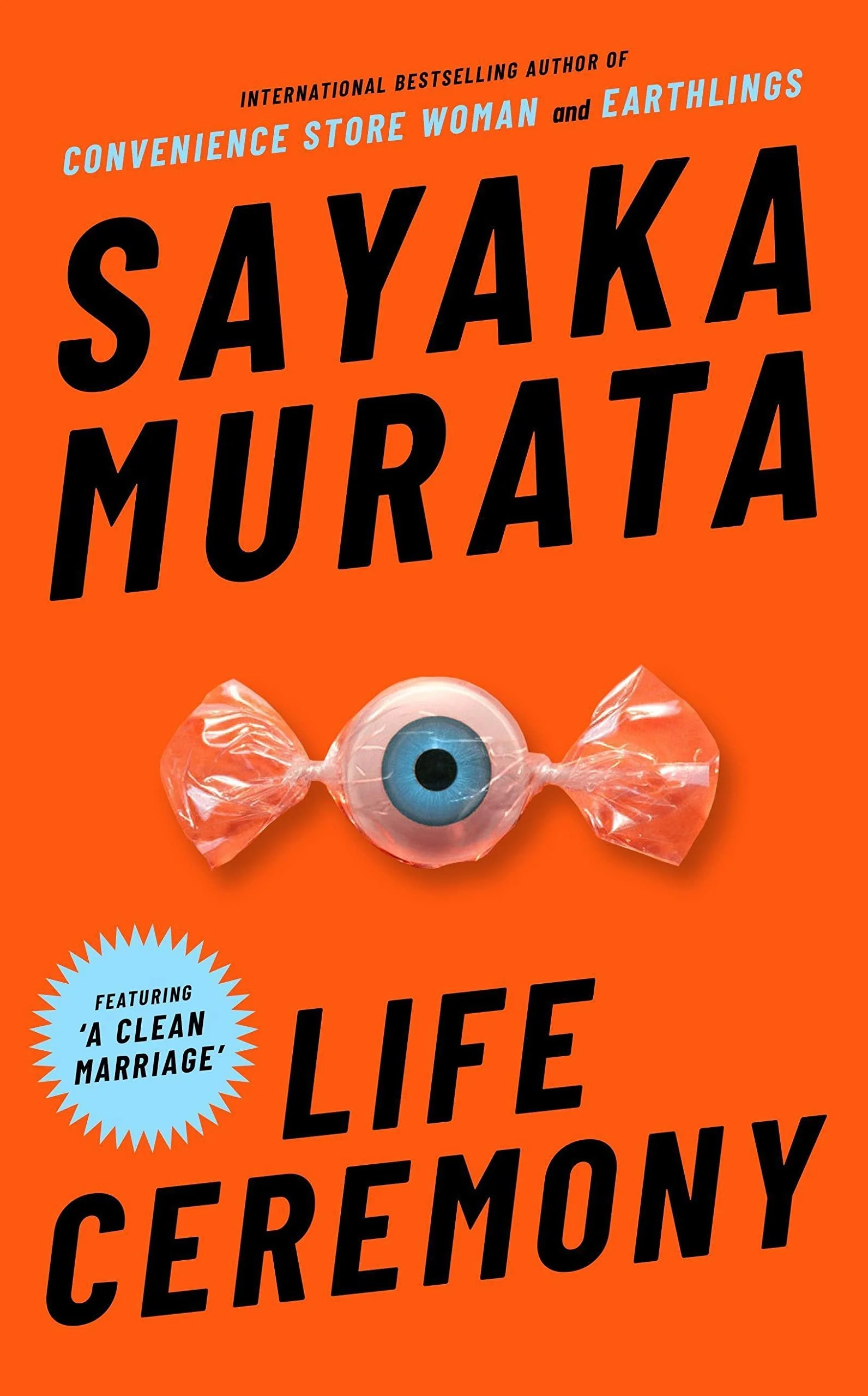Life Ceremony : Stories by Sayaka Murata, translated by Ginny Tapley Takemori (Granta)
Sayaka Murata, author of Convenience Store Woman and Earthlings is back. Life Ceremony is her latest book to be published in English and is a collection of short stories, thirteen stories total. First published in Japan in 2019 with the titled 生命式 (Semei Shiki) by Kawade Shobo Shinsha. The English version was translated by Ginny Tapley Takemori who has also translated books by Ryu Murakami, Miyuki Miyabe, and Kyoka Nakajima.
The lead story A First Rate Material centers on a woman named Nana who is about to be married. She was meeting with a couple of girlfriends when one of them noticed the sweater and asked her if it was made of human hair. Nana was delighted that her girlfriend noticed. Yes, in today’s society, items made from human materials are the norm, a form of status - wedding rings made from front teeth, furniture made from human bones. But her fiance is adverse to anything made from human materials. How can she convince him that is all the fashion now?
A Magnificent Spread focuses on the eating habits of different families. Kumi’s older sister and her husband only eat food they buy online from Happy Future Foods. When Kumi was in junior high school, she told her sister that she was a warrior in a previous life in the magical city of Dundilas and only ate the magical food from that magical kingdom. But now her fiance Keiichi wants her to make her own food for him and his parents. Keiichi only wanted to prove his point, he says to everyone, “Everyone thinks the food other people eat are disgusting, and they refuse to eat it. And that’s the way it should be, as far as I’m concerned”.
The story and namesake of the book Life Ceremony is another fascinating look into what the future holds when someone passes away. When Maho was little, it was forbidden to eat human flesh. She was even reprimanded for making a joke about eating a human. But since then, “the human race has changed little by little”. The population sharply shrank and people feared that the human race would become extinct. This had the “effect of procreation morphing into a form of social justice”. Sex became known as insemination with the goal being to create new life. When people died, it was the custom to have a “life ceremony” instead of a funeral. “Guests at a life ceremony would eat the deceased’s body, and also seek an insemination partner”. It is based on the idea of “birthing life from death”.
Sayaka Murata is definitely a rising star in Japan’s literary world. Her first novel Jyunyu (Breastfeeding) won the Gunzo Prize for New Writers in 2003. She has also won the Yukio Mishima Prize in 2013 for her novel Shiro-iro no machi no, sono hone no taion no (Of Bones, Of Body Heat, Of Whitening City) and in 2016, her tenth novel, Konbini Ningen (Convenience Store Woman) won the prestigious Akutagawa Award.
She continues to write about subjects considered taboo in Japanese society such as sexuality, incest, cannibalism, and LGBTQ issues. It is no easy task to sum up the stories in Life Ceremony. Some of the words I would use to describe the stories are quirky and bizarre. You will laugh, you will cry, you may even become a little nauseated at times. However, every story will make you think about it long after you have finished reading them. ~Ernie Hoyt
